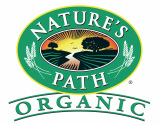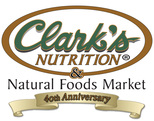|
|
|
|
Letter to the Editor NY Times
To the Editor: The focus on the healthiness of organic food misses a significant point: Pesticides (and herbicides) used for conventional food are inherently toxic. Despite a dearth of human studies, available data suggest that pesticides in our food indeed pose a risk. One study, for example, shows that exposure from dietary pesticides is associated with neurobehavioral problems in children. This is not surprising, since pesticides are neurotoxicants, and children and pregnant women are most susceptible to harm from pollutants. The Environmental Protection Agency uses assumptions, not facts, to formulate safety limits for pesticide residue allowed on our food. Furthermore, history shows that federal safety limits are often erroneous. Even low levels of pesticides can hurt us, since many environmental pollutants cause harm at levels below government safety thresholds. Organic food has less pesticide, resulting in decreased exposure. Until we have sufficient research to shed light on their safety, reducing the body burden of pesticides and other pollutants is a reasonable goal. KEN SPAETH JACQUELINE MOLINE Great Neck, N.Y., Sept. 5, 2012 The writers, medical doctors, are, respectively, director of the Occupational and Environmental Medicine Center at North Shore-LIJ Health System and chairwoman of the system’s department of population health. Most gummy treats are made from the following ingredients: glucose syrup, starch, sugar, flavoring, food coloring, gelatin and citric acid. Because they contain gelatin (collagen inside animals skin and bones) gummy treats are not vegan friendly. You can, however, find organic gelatin-free sweets in most health food stores.
What a parent had to say: A friend of mine used to be a broker for conventional candy companies. The ingredients used to make conventional candies include the same dye that might be used to color clothing and can be toxic. The sugar is refined and contains no nutritional value. The flavors are made in a laboratory petri dish and then mass marketed. All the ingredients are sprayed with pesticides may be genetically modified and contain preservatives like sodium benzoate which are dangerous to your health. THEY ARE DANGEROUS TO KIDS AND ADULTS TOO! According to Allergy Kids’ medical board, one of out of every three children now has allergies, asthma, ADHD or autism, affecting 20 million children. Allergies now affect approximately 20% of all children, having increased by 400% in the last twenty years. Over this same period of time, ADHD has increased by 400% and asthma has increased by 300%, with a 56% increase in the number of asthma deaths So what has changed? …Additives and Preservatives… Unless ingredients are scrutinized in an informed way, ‘natural’ or ‘organic’ labels can currently be misleading, because pseudo-natural and organic products (including many found in Health Food Shops) may also contain ingredients with a known risk to health. As an example, in the United States, The U.S. Department of Health Substances Agency for Toxic Substances (ATSDR) names Cassava as the primary source ingredient for manufacturing of Tapioca. It is a plant that contains high levels of cyanide. The FDA provides for a maximum tolerance allowed in food but do they take into consideration whether it’s a 300 pound male or 30 pound child that will be consuming it, nor do they consider the accumulated amounts that may be consumed. The Mayo Clinic reports dry mouth is common among older adults. Mouth dryness may be due in part to the effects of aging. Consequently, there is a rising demand for candies that are based on organic ingredients such as fruit and vegetable extracts, rather than chemicals and synthetic recipes. According to Allergy Kids’ medical board, one of out of every three children now has allergies, asthma, ADHD or autism, affecting 20 million children. Allergies now affect approximately 20% of all children, having increased by 400% in the last twenty years. Over this same period of time, ADHD has increased by 400% and asthma has increased by 300%, with a 56% increase in the number of asthma deaths So what has changed? …Additives and Preservatives… |
|







